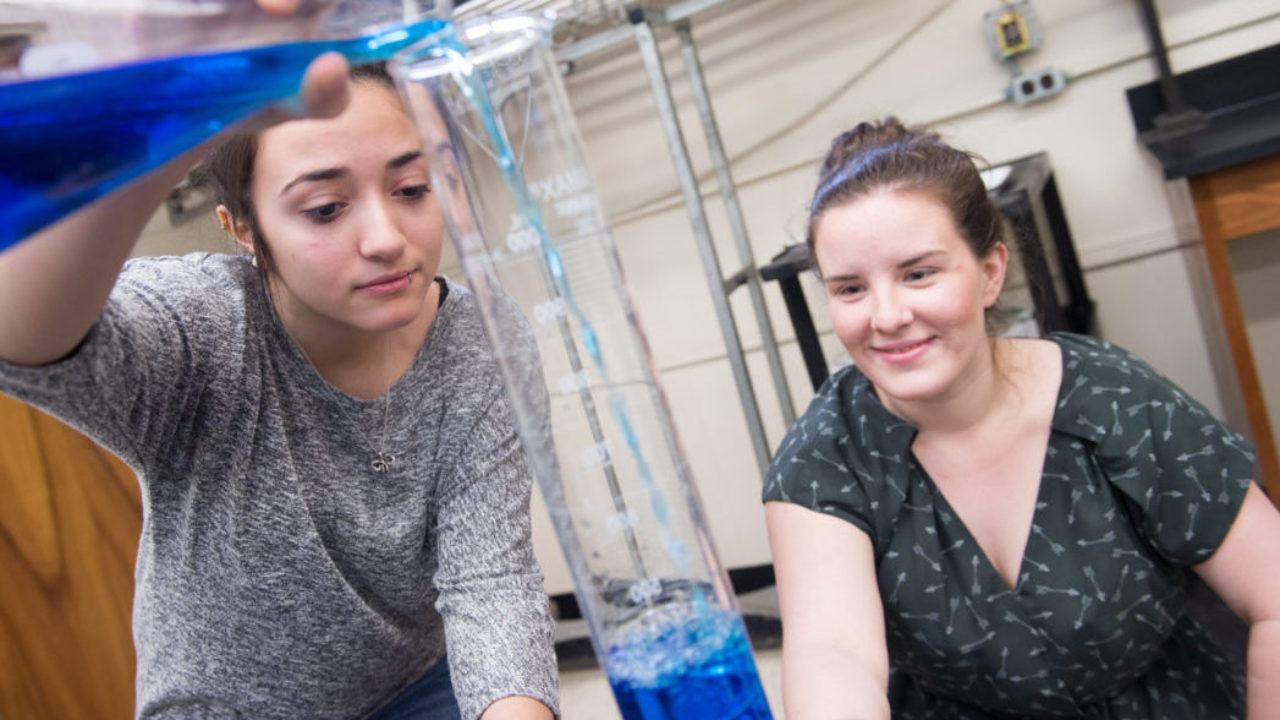Chemistry BS

The BS in Chemistry is the primary degree for entry into the chemical and pharmaceutical industry and also for graduate programs in chemistry, biochemistry, pharmaceutical chemistry, biomedical engineering, and many other areas. This degree is especially suitable for potential applicants to professional schools in medicine, pharmacy, and veterinary medicine. Premed students usually take the MCAT exam in their junior years after completing organic chemistry. The curriculum is certified by the American Chemical Society.
Degree Plan
All students are required to complete the General Education Requirements of their campus in fulfillment of their Bachelor’s degree requirements.
Semesters 1 and 2
- CHEM1201 General Chemistry I Lecture
- CHEM1203 General Chemistry I Laboratory
- CHEM1202 General Chemistry II Lecture
- CHEM1204 General Chemistry II Laboratory
Semesters 3 and 4
- CHEM2261 Organic Chemistry I Lecture
- CHEM2263 Organic Chemistry I Laboratory
- CHEM2262 Organic Chemistry II Lecture
- CHEM2264 Organic Chemistry II Laboratory
Semesters 5
- CHEM3241 Physical Chemistry I Lecture
- CHEM3243 Physical Chemistry I Laboratory
- CHEM3281 Biochemistry I Lecture
- CHEM3389 Biochemistry I Laboratory
Semester 6
Semester 7
- CHEM2211 Inorganic Chemistry Lecture
- CHEM2221 Analytical Chemistry Lecture
- CHEM2223 Analytical Chemistry Laboratory
Semester 8
- CHEM2314 Inorganic Chemistry Laboratory
- CHEM4215 Advanced Inorganic Chemistry
- CHEM4233 Instrumental Analysis Lecture
- CHEM4234 Instrumental Analysis Laboratory
- CHEM4401 Chemistry Seminar
Cognate Requirements
Semesters 1 and 2
Semesters 3 and 4
- PHYS2203 / PHYS2201 University Physics I Lecture / Laboratory
- PHYS2204 / PHYS2202 University Physics II Lecture / Laboratory
Major Requirements
Science Electives: Any upper-level (3000 or 4000) undergraduate or graduate science course or Independent Study
Free Electives: May be chosen from any courses offered at the University after consultation with an advisor (student may not take BIOL1101 -1102). (Foreign language is recommended for students intending to go to graduate school.)
Advanced Mathematics Course: select one course, three credits, from the following:
Major electives: Take 1-8 credits of CHEM or BIOL. Please see an advisor for a list of courses.
A minimum of 120 credits is required for graduation.
QUEST Options available
- BS in Chemistry-MAT, Secondary Ed and Special Ed Concentration
- BS in Chemistry-MAT, Elementary Ed Concentration
- BS in Chemistry-MAT, Secondary Ed Concentration
- BS in Chemistry-MAT, Elementary Ed and Special Ed Concentration
- BS in Chemistry-MAT, P-3 Certification
- BS in Chemistry-MAT, Secondary Ed and ESL